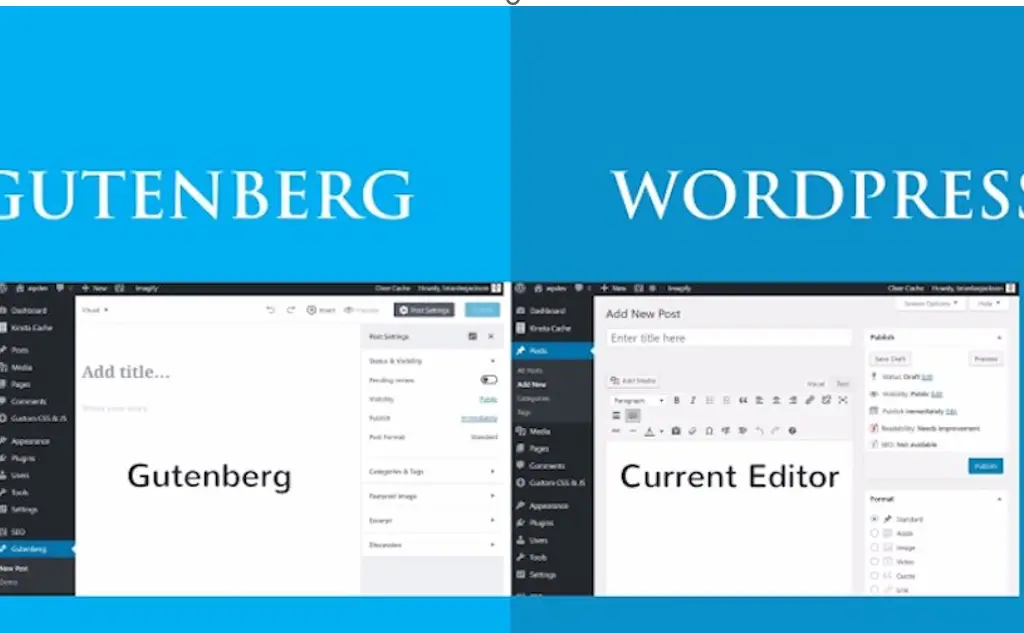What is the Gutenberg Editor?
Unlock new possibilities in digital content management with the Gutenberg Editor. Improve your web content management process, boost your content strategy, and easily manage digital content using this innovative tool. This post will introduce you to the robust opportunities the Gutenberg Editor offers in content management, from content creation to content storage and publishing.
Every creator envisions having a tool that simplifies content management and the Gutenberg Editor excels in this regard. Serving as a solution, for content management, web editing organization, publishing, storage and creation within WordPress it stands at the core of the platform. As a component of this used CMS software, it has revolutionized how content is managed on WordPress for both business and personal blogs.
Named after Johannes Gutenberg, the inventor of movable type printing press over five centuries ago the Gutenberg Editor is often hailed as the “future of content editing.” It was officially introduced to all WordPress users with the release of WordPress 5.0 in 2018. Since then, its adoption has been steadily increasing as more content managers acknowledge its benefits, for content handling.

Main Features of Gutenberg Editor
Block Based Structure; Each element of content. Whether text paragraphs, images, headings, quotes or videos. Is treated as a block that can be manipulated separately. This approach greatly simplifies tasks related to editing organizing and publishing content.
Gutenberg Enhanced User Interface (UI)
The editor offers an interface that ensures a smooth process, for creating content without distractions.
Content Workflow
Gutenberg Editor simplifies the transition from creation to publishing monitoring each stage of content lifecycle management seamlessly.
Empowering Developers
Gutenberg Editor presents a framework that enables developers to craft custom blocks enhancing the effectiveness of content strategies.
According to Matt Mullenweg, the creator of WordPress.com “We chose the name Gutenberg for a purpose.” The editor isn’t a tool, for crafting content; it’s also designed for efficient and easy content management.
Understanding its features can help you manage your content more effectively, whether it’s updating, curating, strategizing, collaborating, delivering, governing, or tracking your content. So, get ready to dive deeper into the Gutenberg Editor, revolutionizing the way you manage your content. Why Use Gutenberg for Content Management? Why choose an ordinary tool for your content when you can opt for something extraordinary like Gutenberg? Let’s dive into why Gutenberg is the stellar choice for content management. It’s time to dispel the myth that content management can’t be creative, efficient, and convenient—all at once.
Benefits of Gutenberg Editor for Content Management Block-Based Editing
Gutenberg’s key feature – its block-based editor – gives users immense flexibility. You can edit sections, move them around, or reuse them, making content editing a piece of cake. As WP Beginner underscores, you can transform and manipulate each piece of content just as if ‘it was a block of clay. Effortless Content Organization: Gutenberg allows content curating to fit the readers’ understanding.
A strategic layout is the weapon that makes your content crisp, engaging, and digestible, thus enhancing your content strategy. Gutenberg offers a user experience by introducing the ‘What You See Is What You Get’ (WYSIWYG) feature, which eliminates the need, for intricate code alterations. This simplification of content management ensures that even individuals, without expertise can navigate with ease.
SEO Friendly
Your content deserves maximum visibility; Gutenberg aids your SEO optimization efforts. It acts like a CMS software steroid creating lean HTML code, thus improving your site speed and potentially boosting your search engine ranking. According to Kinsta, over 5 million websites have adopted Gutenberg since its inception in 2018, proving its efficacy. A survey by WordPress indicated that Gutenberg’s usage saw a surge of 42% in the past year, with user satisfaction touching 86%.
Why Gutenberg Editor Stands Out
Content is king, but management is the queen who runs the household. Gutenberg for content management is like a chessboard. It lets the king (content) retain its glory while the queen (management) makes the efficient moves.” Above all, if content collaboration, content delivery, content governance, and content tracking matter to you, Gutenberg offers these too. Comprehensively, Gutenberg personifies your talented content manager, polishing rough edges, perfecting the flow, and creating a masterpiece of your content journey.
Transitioning from Traditional CMS to Gutenberg Editor
What You Need to Know Are you struggling with the idea of transitioning from a traditional CMS to Gutenberg? Don’t fret! This guide will paint a revealing picture of the features, benefits, and key considerations you need to bear in mind when taking the leap towards content management through Gutenberg.
Key Stages in Transitioning Content Creation
With Gutenberg, the content appears as ‘Blocks’ which can be anything – paragraph, image, quote, etc. This makes the content management process flexible. Content Editing: Gutenberg offers a clean, distraction-free environment to edit your web content. Plus, moving blocks around is much easier than shuffling traditional CMS elements.
Content Publishing
Gutenberg allows you to preview your post as it will appear when it goes live. This feature ensures your site’s “look and feel” always meet your expectations. Content Storage: Instead of entangling yourself in complicated backend code, Gutenberg blocks are reusable – an excellent feature for documentation management. Benefits of Transitioning to Gutenberg According to a study from digital content management firm XYZ, Gutenberg excels in content collaboration and content delivery.
They reported a 35% increase in efficiency when businesses upgraded to Gutenberg from traditional CMS software. “Nothing matches Gutenberg when it comes to planning, organizing, and controlling your content workflow. It’s like having an efficient content manager at your service.” – Jenny Harris, esteemed content strategist. Indeed, the transition does require some levels of content adaptation. But when you’re secured with Gutenberg’s enriched content governance, superior content tracking, and potential for increased SEO rankings, the benefits are well worth the effort!
External Links for Further Reading
Need help with WordPress?
Do you need help with WordPress content creation, design, or support? Contact us today.

1. Explore the official documentation for the Gutenberg Editor and learn about its features in detail: Gutenberg Editor Official Documentation
2. A comprehensive guide from WPBeginner on how to use the Gutenberg Editor: WordPress Gutenberg Guide
3. Understand how to make the most of Gutenberg with Kinsta’s in-depth guide: Kinsta’s Guide on Gutenberg
4. Smashing Magazine’s complete guide to the Gutenberg Editor for content management: Smashing Magazine’s Complete Guide to Gutenberg
5. Insight on how the Gutenberg Editor can help improve your site’s SEO: Search Engine Journal on Gutenberg SEO

